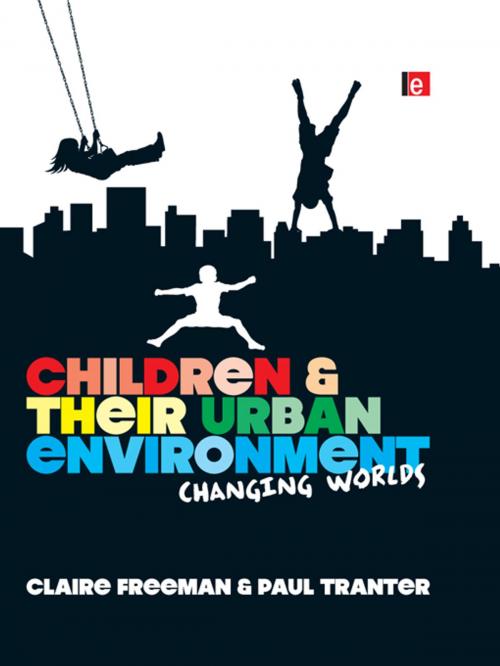Children and their Urban Environment
Changing Worlds
Nonfiction, Social & Cultural Studies, Political Science, Politics, City Planning & Urban Development| Author: | Claire Freeman, Paul Tranter | ISBN: | 9781136539701 |
| Publisher: | Taylor and Francis | Publication: | October 2, 2012 |
| Imprint: | Routledge | Language: | English |
| Author: | Claire Freeman, Paul Tranter |
| ISBN: | 9781136539701 |
| Publisher: | Taylor and Francis |
| Publication: | October 2, 2012 |
| Imprint: | Routledge |
| Language: | English |
In our fast-changing urban world, the impacts of social and environmental change on children are often overlooked. Children and their Urban Environment examines these impacts in detail, looking at the key activities, spaces and experiences children have and how these can be managed to ensure that children benefit from change. The authors highlight the importance of planners, architects and housing professionals in creating positive environments for children and involving them in the planning process. They argue that children‘s lives are becoming simultaneously both richer and more deprived, and that, despite apparently increasing wealth, disparities between children are increasing further. Each chapter includes international examples of good practice and policy innovations for redressing the balance in favour of child supportive environments. The book seeks to embrace childhood as a time of freedom, social engagement and environmental adventure and to encourage creation of environments that better meet the needs of children. The authors argue that in doing so, we will build more sustainable neighbourhoods, cities and societies for the future.
In our fast-changing urban world, the impacts of social and environmental change on children are often overlooked. Children and their Urban Environment examines these impacts in detail, looking at the key activities, spaces and experiences children have and how these can be managed to ensure that children benefit from change. The authors highlight the importance of planners, architects and housing professionals in creating positive environments for children and involving them in the planning process. They argue that children‘s lives are becoming simultaneously both richer and more deprived, and that, despite apparently increasing wealth, disparities between children are increasing further. Each chapter includes international examples of good practice and policy innovations for redressing the balance in favour of child supportive environments. The book seeks to embrace childhood as a time of freedom, social engagement and environmental adventure and to encourage creation of environments that better meet the needs of children. The authors argue that in doing so, we will build more sustainable neighbourhoods, cities and societies for the future.















